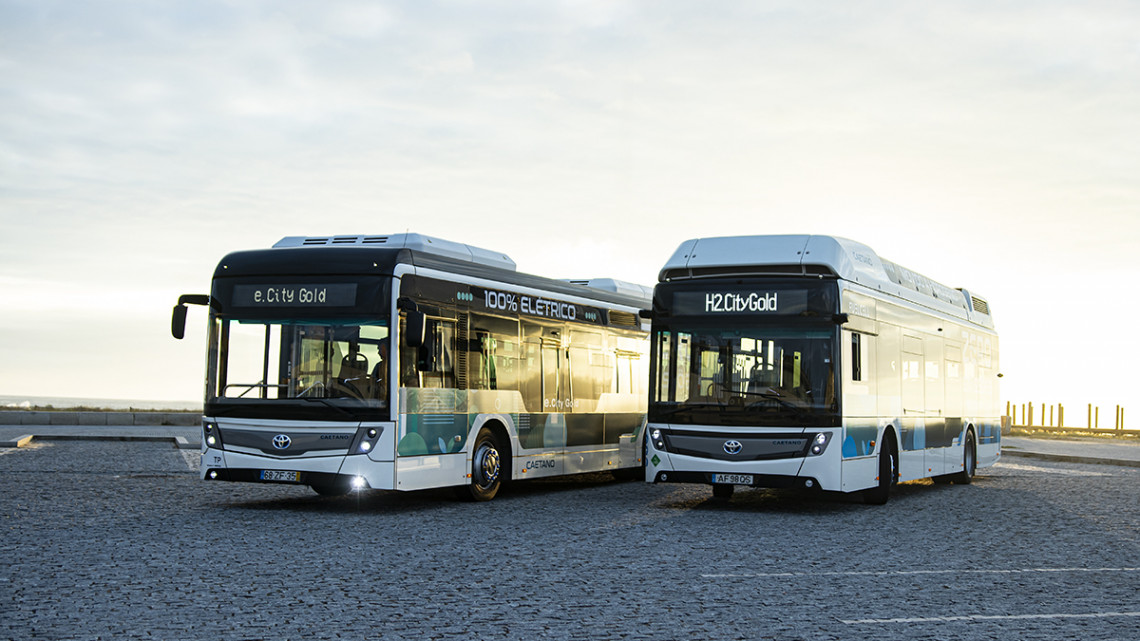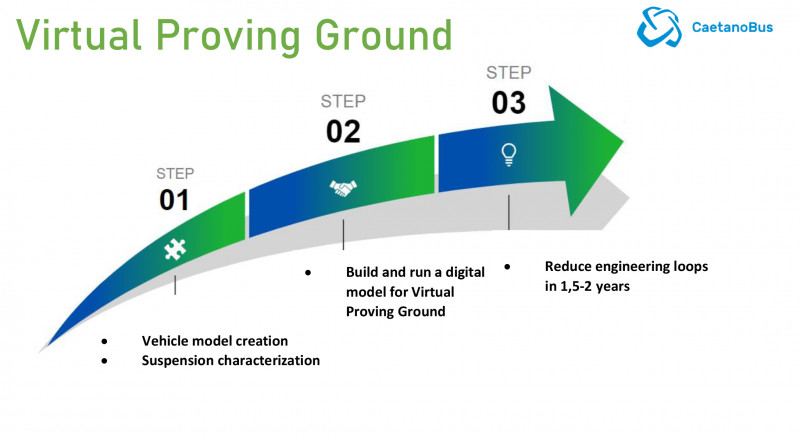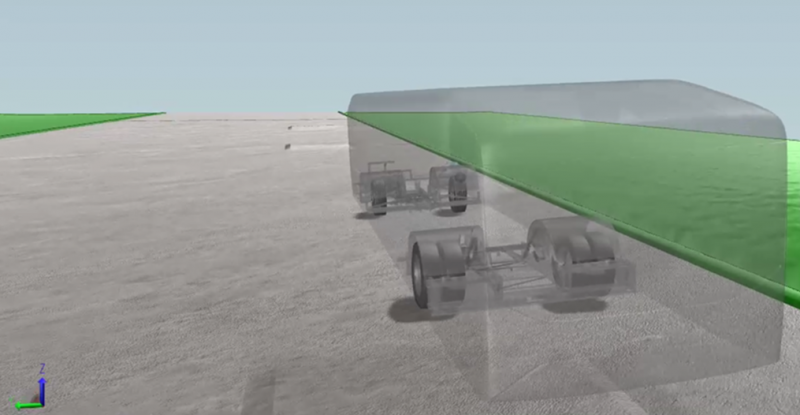CaetanoBus Evolves Towards Virtually Testing Vehicle Performance on a Virtual Proving Ground
How the system simulation software SimulationX empowers CaetanoBus’ chassis and body department to efficiently master vehicle dynamics

CaetanoBus is the biggest manufacturer of buses and coaches in Portugal and serves bus companies in Europe and beyond. They manufacture buses and coaches with different urban, tourism and airport service specifications. The bus maker uses the latest technologies and software to innovate cutting-edge designs that match the operator’s demand for modern, performant, eco-friendly, and safe public transportation. CaetanoBus started to engage in research on electric mobility a few decades ago, kicking-off first developments back in 2010. Today, the company has a consolidated offer of electric and hydrogen-powered mobility products for cities and airports. Some of their products, the e.CityGold and H2.CityGold are co-branded with Toyota and the latter uses Toyota hydrogen Fuel Cell technology.
While CaetanoBus is committed to delivering zero-emission mobility products, they also aim to improve product quality and accelerate time to market in a sustainable manner by reducing the environmental impact of prototype testing with less raw materials and emissions. In order to predict the performance of the new CaetanoBus e.Mobility design and product development teams increasingly rely on numerical reference results from virtual predicting tools, minimizing the need for physical testing and real prototypes.
Virtual Testing for an Early Prediction of Complex System Interactions
If displacing conventional Internal Combustion Engines (ICE) for electric hybrid and hydrogen-powered versions opens new design options, it is a real challenge to predict the impact of layout and design changes on product performance criteria, such as vehicle dynamics or durability. Because engineers cannot rely on experience, they need to run numerous tests for performance homologation. This typically requires various redesign loops, causing high costs and long lead times. Therefore, R&D engineering has started to shift towards virtual tools: they model the mechatronic vehicle system and run numerical simulations in order to validate the performance of new designs - precisely and early.
Solving this task is a complex challenge for system engineers due to the interoperability and interconnection of the required physical domains: electric powertrains interact with the hydrogen and power system, the pneumatic and braking system, the hydraulics and cooling one as well as HVAC for example. As R&D engineers must figure out all these outcomes equally and commit early with confidence to the optimal design, they apply system simulation software alongside other digital tools. This combination allows engineers to create a virtual proving ground in which they can study different functionalities and run performance tests close to real-life operations. Engineers can then digitally demonstrate reliability, safety, energy efficiency, structural integrity, and durability – some insights they would normally get once a prototype is built and hits a test track.

In a nutshell: building and running digital models on a virtual proving ground is key for efficiently managing the growing design complexity and predicting the impact of design changes on product performance criteria: Virtual testing accelerates validation at a much lower cost and much earlier in the development process when changes are still reasonably possible to make.
“We assume that we can save 1.5 to 2 years of development time because the virtual proving ground will help accelerate engineering iterations and frontload the redesign process into the development phases”
Paulo Marques/CTO of CaetanoBusDuring his presentation at ESI Live 2022
Chassis & Body Engineers Master Vehicle Dynamics with SimulationX
Let’s look at a concrete use case from CaetanoBus’ chassis and body department: Back in 2019, they decided to enrich their existing analysis tool chain with ESI’s multiphysics system simulation software SimulationX with the objective to evolve towards a full digital proving ground environment that allows them to:
- accelerate and improve chassis & body definition,
- evaluate structural behavior and multiphysics system interactions,
- improve vehicle dynamics.

Being able to perform accurate multi-body system simulations (MBS), engineers finally obtained the numerical input they needed to virtually study the robustness and durability of the vehicle on different road surfaces. Identifying critical regions in the design stages is very valuable as geometries can be easily redefined to improve the overall final result - a capability with which CaetanoBus engineers achieve lighter and stronger designs. The chassis and body department also uses SimulationX to model the behavior of the vehicle pneumatics using extensive component libraries and to simulate some driving maneuvers as they would on a real test road.
“The multi-physical system simulation capabilities of SimulationX have helped us improve our predictive modeling for vehicle dynamics, which directly contributed to improving our overall product development workflows. Integrating such powerful simulation tools is vital to keep our product development practice efficient, sustainable, and competitive, in a quest to deliver the innovative mobility solutions that our customers expect.”
Paulo MarquesCTO, CaetanoBus
Watch the complete presentation!
To watch the complete presentation from CaetanoBus at ESI LIVE 2022 click here.
Carlos has a Mechanical Engineering Degree from the University of Porto, which he complemented by specific courses in NVH and vehicle dynamics from Loughborough and Cranfield. He then built a solid background in the automotive industry, R&D and Industrialization solutions for body, chassis subsystems, and powertrains in Europe and the Americas. He designed processes to increase CAE productivity and to guarantee proper development direction. More recently, Carlos focused on tackling industry challenges surrounding new mobility and energy solutions.